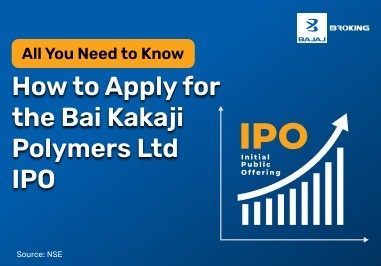When investing in active and passive mutual funds, understanding their fundamental differences is essential. Active funds involve a fund manager who actively selects and manages securities with the goal of outperforming a benchmark index. On the other hand, passive funds track a specific index and do not require frequent buying and selling of assets.
The key distinction in active vs passive funds lies in their management style. Active funds are managed with an aim to capitalise on market fluctuations, whereas passive funds focus on long-term stability and lower costs. Investors who prefer flexibility and potential higher returns may opt for active funds, while those looking for a cost-effective and stable approach may consider passive funds.
The cost structure of active funds vs passive funds is another important factor. Active funds usually have higher expense ratios due to continuous market analysis and portfolio adjustments. Conversely, passive funds typically have lower expenses as they track a market index without active intervention. Understanding these differences helps investors align their choices with financial goals.
Actively Managed Portfolios
An actively managed portfolio consists of securities chosen and adjusted by a professional fund manager. The objective is to achieve better-than-market returns through research-driven investment strategies. Fund managers employ various methods, such as market timing, stock selection, and asset allocation, to enhance portfolio performance.
In active and passive mutual funds, actively managed portfolios are suitable for investors who are willing to take higher risks in pursuit of potentially higher returns. The fund manager's expertise plays a crucial role in decision-making, ensuring that investments align with market trends and economic conditions.
Working of Actively Managed Funds
Active funds vs passive funds differ significantly in terms of investment strategies. Actively managed funds require continuous monitoring, with fund managers making informed decisions based on market conditions. They analyse financial statements, industry trends, and economic indicators to determine the best investment options.
Investors in active vs passive mutual funds should consider the cost implications of actively managed funds. These funds generally have higher expense ratios due to research, analysis, and transaction fees. Despite the additional costs, some investors prefer active management for its potential to generate superior returns and adapt to market changes.
Passively Managed Portfolios
Passively managed portfolios are investment collections that aim to track a specific market index, such as the Nifty 50 or the Sensex, rather than attempting to outperform it. These portfolios follow a structured approach, investing in the same securities as the chosen index in the same proportion. The primary objective of passively managed portfolios is to replicate the index’s performance with minimal active intervention. This approach helps investors gain exposure to a broad market segment while keeping costs low due to limited trading and management efforts.
One of the main advantages of passively managed portfolios is their cost-effectiveness. Since they do not require active stock selection or frequent trades, their expense ratios are significantly lower than those of actively managed portfolios. Additionally, these portfolios tend to be more transparent, as their holdings are directly linked to publicly available index compositions. For investors looking for a long-term strategy with lower fees and steady returns, passively managed portfolios offer an attractive investment option.
Working of Passively Managed Funds
Passively managed funds function by closely mirroring a benchmark index. These funds, which include index funds and exchange-traded funds (ETFs), hold a diversified set of assets that match the index’s composition. Whenever there are changes in the index, such as the addition or removal of a stock, the fund automatically adjusts its holdings to stay aligned. This systematic approach eliminates the need for continuous monitoring and decision-making, making passively managed funds a preferred choice for investors seeking stability.
The low expense ratio of passively managed funds is a significant advantage, as it ensures that more of the investor’s capital remains invested rather than being used to cover management fees. Additionally, since these funds involve minimal buying and selling, they generate fewer capital gains taxes compared to actively managed funds. This makes them a tax-efficient option for investors looking to build wealth over time while minimising costs. By offering market-level returns with reduced expenses, passively managed funds provide a reliable investment approach for those who favour consistency and lower risk.
Active vs Passive Funds
When comparing active and passive mutual funds, it is crucial to consider their fundamental differences, including investment strategy, costs, and expected returns. Active vs passive funds differ primarily in their management style. Active funds vs passive funds involve distinct approaches—active funds aim to outperform the market through strategic stock selection, while passive funds simply track an index.
Active funds are managed by professionals who use various strategies, such as market timing and stock picking, to achieve superior returns. These funds require continuous monitoring, extensive research, and frequent transactions, which leads to higher expense ratios and costs. While active funds have the potential to generate significant returns, their success heavily depends on the fund manager’s expertise and market conditions.
In contrast, passive funds follow a low-maintenance strategy, replicating an index’s performance. Since these funds do not require constant management, they come with lower expense ratios and reduced transaction costs. However, passive funds do not attempt to outperform the market, making them suitable for investors looking for long-term stability rather than aggressive gains.
Differences Between Active vs Passive Mutual Funds
Differences
| Active Mutual Funds
| Passive Mutual Funds
|
Definition
| Created around a specific theme or strategy by experts
| Designed to replicate the performance of an index like SENSEX or NIFTY
|
Goal
| Aim to surpass the performance of the broad market index (benchmark)
| Seek to replicate or match the performance of the market index
|
Expense Ratio
| Ranges from 0.5% to 2.5% depending on equity or debt composition
| The expense ratio does not exceed 1.25%
|
Management
| Fund managers select underlying securities based on market conditions, fund theme, and objectives
| Simply track market indices; no regular fund management required
|
Tax Efficiency
| Higher turnover may lead to greater capital gains distributions compared to passive funds
| Capital gains distributions tend to be lower compared to actively managed funds
|
Cost
| These funds typically incur higher costs than passive funds due to the need for more analysis, research, and trading
| Passive funds generally have lower expenses since the fund manager does not actively select securities beyond those in the tracked index
|
Both active and passive mutual funds have their place in an investor’s portfolio, depending on financial goals, risk tolerance, and investment horizon. Investors who prefer a hands-on approach with the possibility of higher returns may opt for actively managed funds, while those looking for a cost-effective, long-term investment strategy may find passive funds more suitable.
Pro & Cons of Active & Passive Investing
Pros of Active Investing
- Potential for higher returns: Active funds vs passive funds aim to outperform market benchmarks through strategic decision-making.
- Flexibility: Fund managers can adjust holdings based on market conditions, economic outlook, or sectoral trends.
- Hedging strategies: Active funds can implement techniques like short selling or derivatives to manage risks effectively.
- Customisation: Investors have greater control over stock selection, allowing for thematic or sector-focused investments.
- Tax management: Active funds may use tax-loss harvesting strategies to offset capital gains, reducing overall tax liabilities.
Cons of Active Investing
- Higher costs: Active and passive mutual funds have different expense structures, with active funds charging higher management fees.
- Risk of underperformance: Not all fund managers consistently outperform the market, making returns unpredictable.
- Market timing dependency: Success depends on making the right investment decisions at the right time, which is challenging.
- Capital gains tax impact: Frequent buying and selling may trigger higher tax liabilities due to short-term capital gains.
Pros of Passive Investing
- Lower costs: Passive funds have lower expense ratios due to reduced trading and fund management efforts.
- Market consistency: Passive funds track benchmark indices, providing long-term market-aligned returns.
- Transparency: Investors always know the holdings of the fund, as it mirrors an index.
- Lower tax burden: Fewer transactions mean reduced capital gains tax compared to active funds.
Cons of Passive Investing
- Limited flexibility: Passive funds do not adapt to changing market conditions or economic trends.
- No outperformance potential: Passive funds will not exceed the benchmark index returns, even in bullish markets.
- Sector concentration risks: If an index is dominated by specific industries, investors may face higher exposure to sector downturns.
- Tracking error: A small deviation in fund performance from the benchmark can impact returns.
Key Factors to Evaluate Before Investing in Active or Passive Funds
When deciding between active vs passive mutual funds, investors must assess their risk appetite, financial goals, and investment horizon. Active funds tend to suit investors willing to take calculated risks for potentially higher returns. In contrast, passive funds may be more appropriate for individuals seeking stable, long-term gains with lower costs. Understanding these differences is crucial for aligning investments with financial objectives.
Expense ratio is another key determinant, as active funds typically charge higher fees due to management and operational costs. While passive funds come with lower costs, they may not offer the potential for above-market returns. Additionally, investors should consider tax implications, as frequent trading in active funds can lead to higher capital gains taxes. Evaluating these factors ensures a well-informed investment choice between active and passive mutual funds.
Choosing Between Active and Passive Funds
The decision between active vs passive funds depends on multiple considerations, including investment strategy, market outlook, and individual risk tolerance. Investors aiming to capitalise on market inefficiencies and generate alpha may prefer active funds. However, they should be prepared for potential fluctuations in performance and higher costs.
Conversely, investors who seek broad market exposure with minimal involvement may find passive funds more suitable. Since passive funds mirror benchmark indices, they reduce the risk of human error in stock selection while offering cost-efficient returns. Combining both strategies can help create a balanced portfolio that leverages the advantages of each investment approach.
Final Thoughts
Active and passive mutual funds serve different investment purposes and cater to varying investor preferences. Active funds vs passive funds is not a one-size-fits-all debate, and investors should evaluate their financial situation before making a decision. While active funds provide flexibility and potential for higher returns, passive funds offer stability and lower costs.
For long-term wealth creation, a blended approach may be beneficial. Combining active vs passive mutual funds can help investors diversify risks while optimising returns. Understanding investment objectives and market conditions is essential for making an informed choice between active and passive investing strategies.














